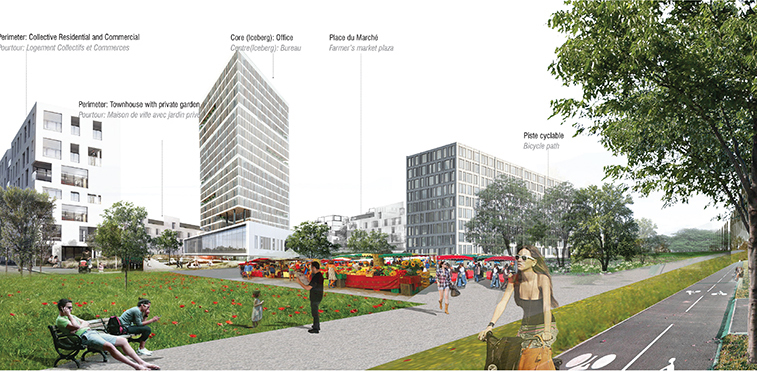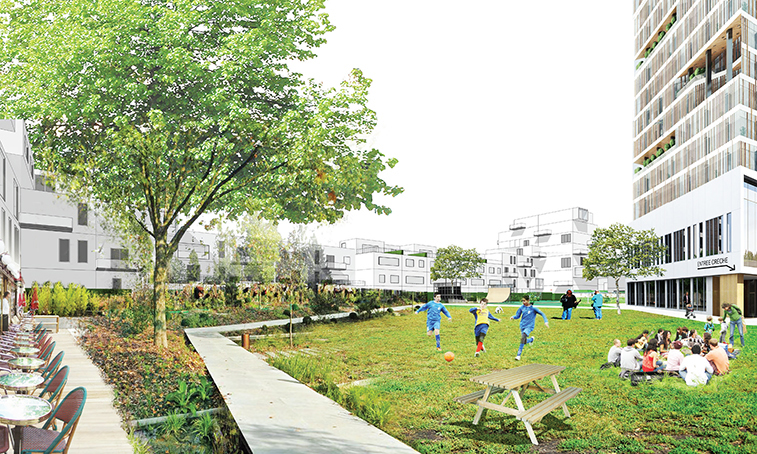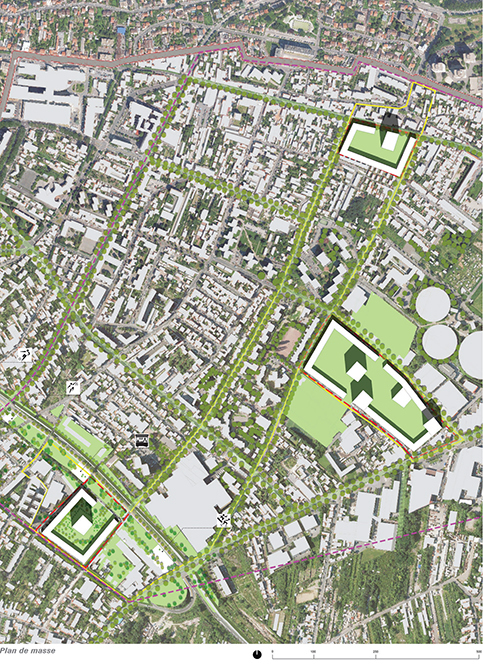 |
0 | The city of Montreuil is facing new challenges to reconnect its boroughs: welcome an increasing population, maintains its existing activities, creates jobs, and attracts new potentials. We believe it is important to analyze and design a new urban block to solve these issues. How different will that block be? What changes must operate to cater with the new needs of the city 2.0? Observing the city in a wide scale, the block 2.0 must connect and be connected: all the ramifications that can irrigate it shall be treated carefully. Thus, our desire is to create sutures to strengthen the weakened urban fabric: bike lanes, streets, foot path, alleys etc. Some important axes should regain their true & original status: for example the S. Allende Blvd. incorporating bike lanes, new sidewalks and completing the alignments of trees is necessary. More specifically, we want to return to the pre-A186 urban fabric: literally sew the Upper and Lower Montreuil, recreating the former grid that used to bond the two neighborhoods with one another. The area reclaimed on the A186 is a great opportunity for Montreuil which can create a space of representation and socialization for its citizens: this area can be organized as a long gigantic public square which can accommodate many activities: market place, cultural and festive events, fêtes de la Music etc. |
|---|
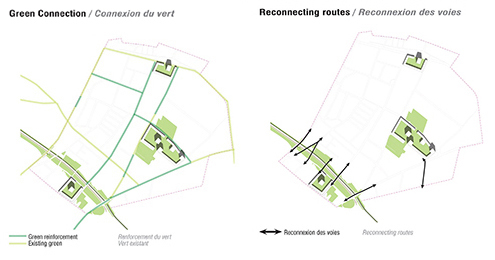 |
|---|
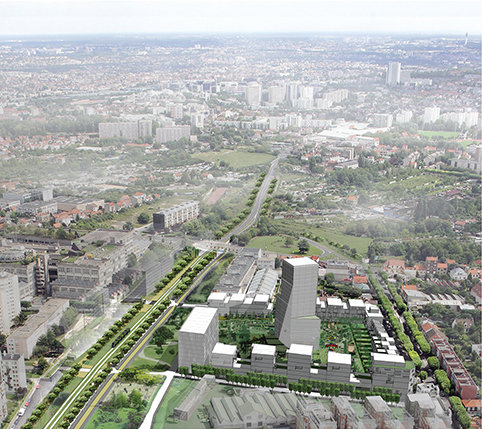 |
On a smaller scale, the block must exercise a power of attraction on the population: we believe that this aspect is inseparable from its densification which will have the effect of concentrating many diverse activities in one place: accommodation, offices, services and public facilities etc. In addition we want to preserve within our proposal the existing economic activities that are very employment generating: The block 2.0 must live! To achieve this goal, we want to develop an adaptable / adjustable block which must meet two requirements:> A constraint of integration, the new block must slip in the existing environment, create as many square meter as possible without inserting conflicting elements: avoid scale clash, create a transition between low existing building and new denser building.> A constraint in terms of program: housing, offices, cultural and educational functions as well as business premises and logistics activities. The question that must meet the future block 2.0 is therefore a problem of density, connection and consequently of integration within the existing fabric. |
|---|
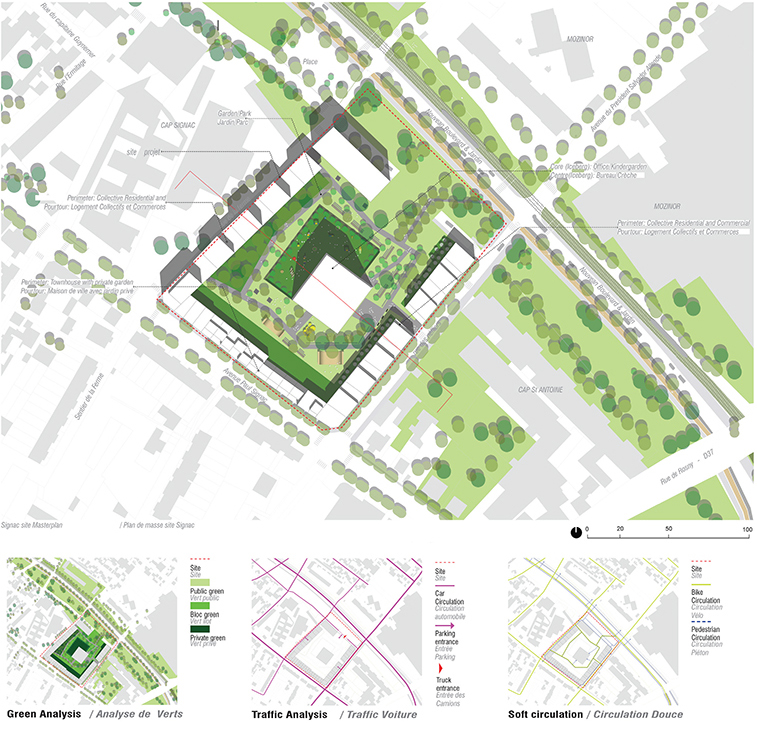
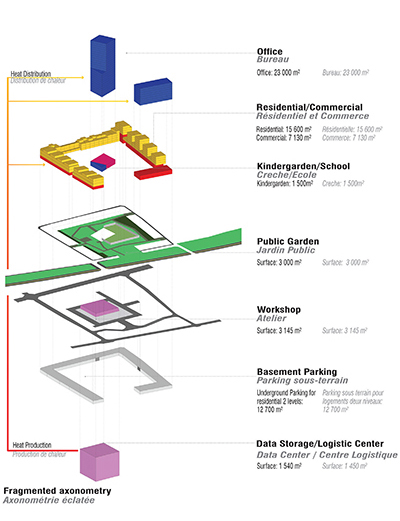 |
In a first step, our project proposes to enunciate the principles of a methodology that aims to create a new urban block meeting the ambitions outlined above. Thereafter, we will adapt the methodology to each of the three sites proposed by Europan in order to create a tailor made project for each plot: Boissière, Roche and Signac. The urban Block 2.0 consists of 4 elements that work in symbiosis:
A PERIMETER, which follows the periphery of the plot, and materialize the limit between the public and (semi) private space. This contour that confronts with the existing fabric shall respect its template and typology. Indeed, the Project wants to adapt with the context and prevent excessive scale conflicts. A CORE (the iceberg), which occupies the central part of each island, symbolizes the renewal of each neighborhood, it is a landmark and orientation element in the city. A GARDEN / PARK, or rather different types of green areas: vegetable gardens for residents and schools, recreational areas, picnic, strolls, private backyards adjoining the urban villas, biodiversity areas and even larger spaces for sports activities.
A BASEMENT which breaks down into two parts:
The submerged part of the iceberg is occupied mostly by digital storage and logistics activities: the city’s appetite for distribution and data centers never ceasing to grow, we believe that these places are ideal for this function. They not only create activity and jobs but also generate a lot of heat that can be redistributed to neighboring buildings! In conclusion, this tailor made urban block or block 2.0 is a new form of urban cluster, which perfectly meets the evolving needs of the modern city (density, mobility, activities, diversity of typologies etc.) while respecting the existing urban fabric. We hope that its development can reconcile previously contradictory concepts: density, landscape, high-rise building, living environment, proximity, green space, work, rest etc. |
|---|

